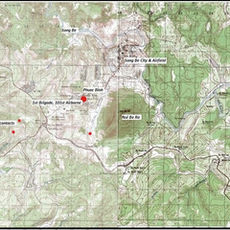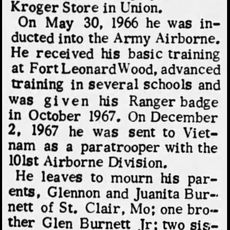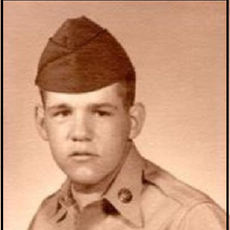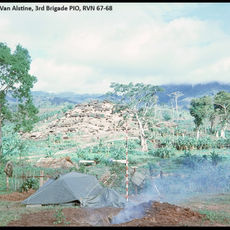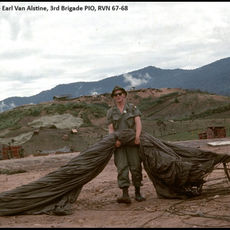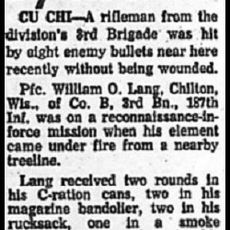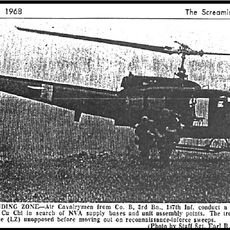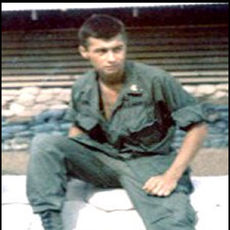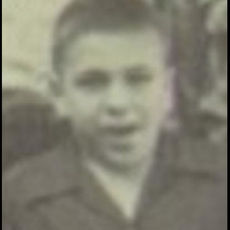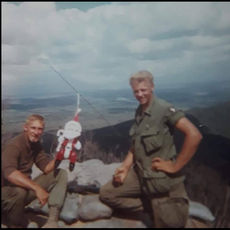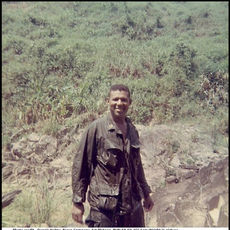

1968 Scrapbook
The scrapbooks on this page are organized by month. Scroll down and click each scrapbook for additional pictures and information.
Note: The scrapbooks are not meant to tell the entire history but simply display pieces of the overall story. 100 percent accuracy is difficult to attain: division and brigade level reports do not contain details regarding the daily operations of the battalion (nor do articles); reports may have omissions and errors; soldiers who were at the same battle/event often remember things differently due to position, perspective, line of sight, fatigue and stress; and memories have often faded. With more information we become more accurate.
January 1968
After thirty days of training and acclimation, to include a period learning reconnaissance in force tactics followed by combat assault insertions, 3rd Brigade and the Rakkasans began participating in larger combat operations in January of 1968. The first operation that the 3/187th engaged in was Operation Rakkasan Sweeper, which commenced January 6,1968 and ended January 13, 1969. Operation Rakkasan Sweeper entailed the clearing and security of HWY 1A from Phuoc Vinh south to the village of Phu Giao, as well as security of the Song Be Bridge. Next came Operation Manchester which began for 3rd Brigade on January 14, 1968. This operation was originally a 199th Light Brigade Operation that began in December of 1967. According to “Operational Report for Quarterly Period Ending 31 January 1968, Headquarters 101st Airborne Division", Operation Manchester was a 3rd Brigade operation in Binh Duong and Bien Hoa Provinces. The mission was: “To target on the destruction of the VC Dong Nai Regiment; disrupt VC infiltration west through AO Manchester from War Zone D into the Di An area; and to prevent the launch of mortar, rocket, and/or ground attack from AO Manchester against the Long Binh - Bien Hoa military complex”, page 2. The report mentions the following regarding the 3/187th in the early days of the operation: “3/187th conducted a road clearing operation along HWY 1A from Phuoc Vinh to the junction of LTL 16 and Hwy 1A (Vic XT886374)” and “Company D/3/187 Inf established a defensive position around the Song Be River Bridge (XT925442) astride Hwy 1A”, page 3. The report also indicates that the battalions of 3rd Brigade (1/506th, 2/506th and 3/187th) were rotated between Phuoc Vinh, the Song Be Bridge and Fire Support Bases Dave and Keene: “The battalions rotated responsibility for the FSPB’s, the highway, the bridge site, and the security of Phuoc Vinh Base Camp”, page 3. The 3/187th suffered their first two soldiers killed in action in January of 1968. Larry Stephen Seminiuk of Bravo Company, was killed in action on January 17, 1968 during a night ambush. William Edmund White III of Alpha Company was killed in action on January 29, 1968, due to a land mine detonating during a reconnaissance in force operation. In the early morning hours of January 31, 1968, the Tet Offensive exploded across III Corps. NVA and VC actions during the 1968 Tet Truce had kicked off a day early in I Corps and II Corps - January 30, 1968.
Click or double click a picture to view description and scroll gallery.
February 1968
The Rakkasans and 3rd Brigade continued with Operation Manchester into February of 1968. The 1968 Tet offensive exploded across III Corps on January 31, 1968 and also continued into February. Within a few days after the initial Tet Offensive attacks, it was evident that the attacks did not result in the general uprising that the North Vietnamese had hoped for. NVA/VC attacks and fighting continued, but the upper hand was no longer with the NVA/VC. According to “Combat After Action Report, Commanding General, United States Military Assistance Command, Vietnam” which was the Tet After Action Report for III Corps Tactical Zone: “The Period 2-5 February was transitional between a predominance of VC initiated attacks and the regaining of the initiative by US FWMF (Free World Military Force) and ARVN (Army of the Republic of Vietnam) forces”, page 20. In the area near FSB Dave, the report indicates that the village of Tan Uyen was attacked on February 4, 1968. Tan Uyen was located just west of FSB Dave. "After 5 Feb the battle around Saigon changed in character. While separate attacks against outlying province and district capitals continued, they were occurring in diminishing frequency and intensity”, page 22. In February, during the Tet Offensive/Counteroffensive, while elements of the battalion continued with Operation Manchester, other elements were pulled into Bien Hoa, Tan Sun Nhut/MACV Headquarters and other locations. The exact dates that elements of the 3/187th were pulled from Operation Manchester are currently unknown. On or around February 17, 1968 Operation Manchester ended. It is currently unknown what operation the 3/187th participated in next - possibly Operation Uniontown but unconfirmed. Operation Uniontown was a 199th multi-phase operation and there is documentation that supports that in late February and into March, elements of 3rd Brigade were operating in Phuoc Long Province near Song be City in support of Uniontown North. "Operation Report - Lessons Learned, 3rd Brigade, 101st Airborne Division for Period Ending 30 April, 1968" indicates: "During the reporting period, the 3d Brigade conducted counter-insurgency operations in Bien Hoa and Binh Duong Provinces. Two organic and one attached battalion were responsible for security of the rocket belt north and east of Long Binh/Bien Hoa complex and interdiction of movement along primary avenues of approach into the area. The remaining organic battalion provided local security for Phuoc Vinh Base Camp and conducted Bushmaster-Type operations in Binh Duong Province", (page 1). The 3/187th suffered three Rakkasans killed in action in February of 1968: Paul David Shamp Jr. (Charlie Company), Lester Wesley Johnson Jr. (Charlie Company) and Jesse Lee Smith (Bravo Company).
Click or double click a picture to view description and scroll gallery .
March 1968
March found the 3/187th continuing to engage in and support Tet Counter-offensive efforts as well as provide security at Phuoc Vinh Basecamp and the Song Be Bridge. In late February of 1968, Charlie Company was placed under the operational control of the 1/506th and was operating near Song Be City, in Phuoc Long Province. Charlie Company soldiers engaged in firefights on both March 4, 1968 and March 5, 1968, losing four men killed in action and unknown number wounded. According to "Combat Operations, Staying The Course, October 1967 to September 1968" (Villard, 2017), in early March "Most of the enemy units that had taken part in the initial wave of the Tet offensive were only marginally combat effective at this point, but COSVN (Central Office for South Vietnam - a North Vietnamese organization) could still maintain psychological and economic pressure on the capital by clinging to its suburbs while laying the groundwork for the next major assault", page 460. Plans for a major US offensive into Warzone D were changed in order to better secure the areas surrounding Saigon. Villard writes "At Westmoreland's direction, Weynard (LTG Weynard, II Field Force Commander) and Khang (LTG Khang, III Corps Tactical Zone, ARVN Commander) merged their respective sweep-and-clear missions on the outskirts of Saigon into a combined effort known as Quyet Thang (Resolved to Win)", page 460. Quyet Thang was a II Field Force & ARVN/multi-division operation running from roughly March 11, 1968 to April 7, 1968, covering the entirety of III Corps Tactical Zone. It encompassed numerous phases and smaller operations. Available records indicate that during Quyet Thang, elements of the 3rd Brigade engaged in Operation Valley Forge starting March 8, 1968. Operation Valley Forge was a 199th Light Brigade operation and also involved elements of the 11th Armored Cavalry Regiment. Operation Valley Forge ran from March 7, 1968 to March 16, 1968 and focused on the area east of Bien Hoa. Following Operation Valley Forge, elements of 3rd Brigade engaged in Operation Box Springs. Operation Box Springs was a 199th Light Brigade and 3rd Brigade Operation involving the 3/187th, 3rd Brigade Long Range Reconnaissance Patrol (LRRP), 58th Platoon - Scout Dogs and 326th Engineers. The purpose of Operation Box Springs was to interdict NVA/VC supply lines that ran through Warzone D to Saigon. A total of fifteen Rakkasans lost their lives during the operation as well as two LRRP soldiers. On or around March 28, 1968, elements of the 199th were moved to Tay Ninh. According to Villard, "The 3d Brigade, 101st Airborne Division, covered the temporary absence of the 199th Infantry Brigade by moving 1st and 2d Battalions of the 506th Infantry from Phuoc Vinh to Long Binh, leaving the 3d Battalion, 187th Infantry to screen the western side of War Zone D", page 463. March proved to be a deadly month for 3/18th with twenty-two (22) Rakkasans killed in action: Davis Louis Bidart (Charlie Company), Gary Ray Burnett (Charlie Company), Michael Walter Langer (Charlie Company), Fredrick Ellis Larsen (Charlie Company), Melvin B Fenn (Alpha Company), David Lee Edny (Echo Company), Arnold Paul Sarna (Echo Company), Robert Anthony Itzoe (Echo Company), Walter Alexander Williams (Alpha Company), Michael David Carroll (Delta Company), Paul Allan Conner (Delta Company), Cecil Leroy Davis (Delta Company), Roy Lee Estrada (Delta Company), Larry Vernard Green (Delta Company), Steven Louis Messerli (Delta Company), Dennis Francis Moore (HHC Medic - Delta Company), Juan Jose Nazario (Delta Company), Jimmy L Sherrill (Delta Company), Larry Dean Sain (Bravo Company), Thomas Lloyd Smith (Bravo Company), Odis Leon Gosnell (Bravo Company), and Farris Lee Richardson (Bravo Company).
Click or double click a picture to view description and scroll gallery.
April 1968
Operation Toan Thang started April 7, 1968 and ran through late May of 1968. Operation Tong Thang (Total Victory) involved elements of multiple US Army Divisions, Australian and ARVN Units. Actions occurred in several provinces throughout II Field Force/III Corps Tactical Zone. Following Quyet Thang, "TOAN THANG was the first of a series of massive operations combining the assets and operations of the ARVN's III Corps and the American's II Field Force. The purpose of this first operation was to maintain the post-Tet pressure on the enemy and to drive all remaining NVA/VC troops from III Corps and the Saigon area. A total of 42 U.S. combat battalions participated at one time or another in TOAN THANG", https://www.vhpa.org/KIA/panel/battle/68040804.HTM. According to "Combat Operations, Staying The Course, October 1967 to September 1968" (Villard, 2017), "Operation Toan Thang expanded allied military operations from the districts that surround Saigon to most of III Corps. With the South Vietnamese Army now back on its feet, Weyand's forces enjoyed greater freedom to pursue COSVN's main force units into the northern provinces of III Corps. Nearly every combat unit in III Corps joined the counteroffensive, although some units continued with missions such as base security that limited their participation', page 464. The 3/187th lost seven Rakkasans killed in action in the month of April 1968 - six of those due to a "friendly fire artillery accident" on April 21, 1968: Carl Leonard Carlson (Charlie Company), Felix Vazquez Jr (Alpha Company), Michael Byron Alvarez (Charlie Company), Walter Ridgeway Winder Jr. (Charlie Company), Ronald Devone Griffin (Echo Company), Robert Leonard Johnson Jr. (Echo Company), and Kenneth Eugene Kotyluk (HHC Medic - Charlie Company).
Click or double click a picture to view description and scroll gallery. Content under construction and currently incomplete.
May 1968
In May of 1968, 3rd Brigade continued Operation Toan Thang in Bien Hoa and Binh Duong Provinces. The mission continued as: security of the rocket belt; protection of the Bien Hoa/Long Binh military complex; security of Phuoc Vinh Basecamp; counterinsurgency and reconnaissance in force operations in the area of operations. The "Operational Report of 3d Brigade, 101st Cavalry Division for Period Ending 31 July 1968" indicates the following: "While operating in Bien Hoa and Binh Duong Provinces, two organic and one attached battalion were responsible for security of the rocket belt north and east of Long Binh/Bien Hoa complex and interdiction of movement along primary avenues of approach into the area. The remaining organic battalion continued to provide local security for Phuoc Vinh Base Camp and conducted bushmaster-type and reconnaissance in force operations in Binh Duong Province" (page 1). On May 23, 1968, 3rd Brigade began movement to Dak To in the II Corps Tactical Zone/I Field Force under Operation Lucas Green/Operation Mathews. Operation Lucas Green/Operation Mathews was a joint operation involving 3rd Brigade and elements of the 4th Infantry Division. Intelligence reports indicated that the 325C NVA Division was amassing in the tri-border (Vietnam, Cambodia and Laos) region with plans to move on the Ben Het Special Forces Camp and the valley leading to Dak To (Tu Mrong Valley). The 4th Infantry Division manned numerous firebases in the area overseeing the valley. Available records indicate that the 3/187th moved to Dak To on May 25, 1968. According to the aforementioned operational report: "A and B Companies 3d Battalion were placed under the operational control of 1st Battalion, 8th Infantry. D Company 3d Battalion had the mission of securing the 3d Brigade Base Camp, Camp Whitehead, ZB03322", page 2. Based on intelligence updates, elements of 3rd Brigade began movement to Dak Pek to help secure the Special Forces/CIDG bases in the area. The 3/187th closed Dak Pek on May 29, 1968. The 3/187th lost five men killed in action in May of 1968: Billy Brister, Anthony D Hatcher and Fred H Osburn Jr of Charlie Company; George Sosa of Bravo Company; and Bobby L Wheeler of Alpha Company.
Click or double click a picture to view description and scroll gallery. Content under construction and currently incomplete.
June 1968
June 1st through June 13th
The 3/187th and elements of 3rd Brigade continued operations in and around Dak Pek through roughly June 8, 1968 when movement back to Dak To occurred. Available reports indicate that movement back to Phuoc Vinh occurred on and around June 9, 1968. After only a few days back at Phuoc Vinh Basecamp, elements of 3rd Brigade began moving to the 25th Infantry Division Basecamp at Cu Chi. From roughly June 13, 1968 through October 10, 1968, the 3/187th and elements of 3rd Brigade would be under the operational control of the 25th Infantry - Operation Toan Thang II.
Click or double click a picture to view description and scroll gallery. Content under construction and currently incomplete.
June 1968
June 1st through June 13th
From roughly June 13, 1968 through October 10, 1968, the 3/187th and elements of 3rd Brigade would be under the operational control of the 25th Infantry - Operation Toan Thang II. Combat operations for the Rakkasans began June 15, 1968 when elements of the battalion were inserted near the village of Thanh An and battalion forward command post was temporarily moved to FSB Allen. Available reports indicate that elements of the battalion continued to operate in and around Thanh An/FSB Allen through roughly June 20th - suffering two KIA's and over a dozen wounded. At that time the battalion was moved back to Cu Chi with elements operating in and around FSB Lela. On June 21st, elements of Alpha Company were inserted into a blocking position to reinforce elements of the 1/506th. The 1/506th lost nine men KIA in this operation with Alpha Company suffering WIA. One or around June 25, 1968 the battalion was moved to Dau Tieng, near the Michelin Rubber Tree Plantation where it remained for a few days. On or around June 27, 1968 the battalion was moved once again. From June 15, 1968 to October 10, 1968, the battalion moved locations frequently with companies and platoons often in operating in different areas. As a rapid response force, the 3/187th and 3rd Brigade were inserted into all the hots spots in the 25th Infantry Division area of operation. Four Rakkasans lost their lives in June of 1968 - Robert Richard White (Alpha Company), Jesse Stephen Ayres (Delta Company), Norman Jones, Jr (Delta Company) and Robert Lloyd Coulter (Delta Company).
Click or double click a picture to view description and scroll gallery. Content under construction and currently incomplete.
July 1968
In July of 1968, the 3/187th continued operating under the operational control of 25th Infantry Division. In July of 1968, the 3/187th suffered the following losses: Donald Earl Bear, Craig Jesse Devore and James David Nansel of Bravo Company; William Irving Turner Jr, HHC/Medic; Anthony Irvin Lee and James J Strangeway Jr of Alpha Company; Michael Elkington of Echo Company/Recon; Cecil Leory Mathew Jr of Charlie Company; Jesus Ernest Chavez, Jr of Delta Company; and Riichard Henry Mc Kinney of Alpha Company.
Click or double click a picture to view description and scroll gallery. Content under construction and currently incomplete.
August 1968
August 1968 opened with the 3rd Brigade Continuing "...to conduct combat operations in the 25th Infantry Divisions Tactical Area of Responsibility with two battalions and attached support elements. The principal area of interest was Area of Operations Stream which lay north, northwest and west of Cu Chi in Hau Nghia and Tay Ninh Provinces. Extensive reconnaissance in force operations, Eagle Flights, Airmobile operations, night ambush patrols, and aerial surveillance were employed to interdict movement along avenues of approach to critical installations and populated centers in III Corps Tactical Area from Cambodia and War Zone C", "Operational report of 3d Brigade 101st Airborne Division (Airmobile) for Period Ending 31 October" page 1. In early August of 1968, elements of the 3/187th rotated back to Phuoc Vinh basecamp to provide security and conduct operations around Phuoc Vinh Basecamp. The 3/187th Retunred to the 25th Infantry Division area of operation on or around August 27, 1968 and took over FSB Patton, near Trung Lap, from the 1/506th.
Click or double click a picture to view description and scroll gallery/ Content under construction and currently incomplete.
September 1968
September 1st through 11th
On September 3, 1968, the 3/187th constructed FSB Shafter. According to "Operational Report of 3d Brigade 101st Airborne Division (Airmobile) for Period Ending 31 October 1968", "The first week of September again marked an increase of enemy activity. This resulted in a reconfiguration of forces with closing of Fire Support Base Patton and the construction of Fire Support Base Shafter, XT6525, by the 3d Battalion on 3 September". September 1968 proved to be the deadliest month for the 3/187th in the Republic of Vietnam.
September 1968
September 12th through 30th
On September 12, 1968 a 25th Infantry Division convoy was ambushed on Route 22 and a fierce firefight ensued. Sometime in the afternoon of September 12, 1968, LTC Scheets, 3/187th Battalion Commander, was placed in charge of a task force of three companies to come to the aid of the 25th ID convoy. The Companies were Bravo Company, 3/187th, Delta of the 2/506th and Bravo of the 2/27th. Additionally on September 12, 1968, the 3/187th received orders to close Fire Support Base Shafter and begin the construction of Fire Support Base Pope.
October 1968
As October dawned, the 3/187th forward command post continued to operate out of FSB Patton II. On October 6, 1968, Bravo Company enaged in two firefights - the second being of an extended duration. As a result, Bravo Company lost three men killed in action and a fourth soldier killed on October 7, 1968. On the 7th, Delta Company was inserted in the vicinity of the contact and along with Bravo Company, engaged in additional, intense firefights well into October 8, 1968. Additionally, on the morning of the 8th, the 3/187th was scheduled for transport by convoy back to Cu Chi Basecamp. The Rakkasans were headed to Phuoc Vinh to prepare for movement to the I Corps Tactical Zone. The morning of the 8th was spent breaking down FSB Patton II in preparation for transport. However, the 25th Infantry Division convoy and escorts were delayed, leaving the Rakkasans at FSB Patton II vulnerable. In the early afternoon, the broken down fire support base received incoming mortars rounds and several Rakkasans were wounded. The much delayed convoy finally arrived just before 6:00 PM and the Rakkasans loaded into the beds of the trucks. At the corner of HWY 1 and 7A, the convoy was ambushed. A total of four Alpha Company soldiers and one Medic were killed in action and many more wounded. Close to midnight of October 8, 1968, all elements of the 3/187th closed Cu Chi Basecamp. Around the 10th of October, the 3/187th returned to Phuoc Vinh Basecamp and began packing up in preparation for the move to the I Corps Tactical Zone. The move to I Corps occurred over a few days, but the 3/187th officially reported to Major General Zais, the 101st Airborne Division Commander, on the tarmac at Phu Bai on October 18, 1968. Around the 20th of October, the 3/187th moved to FSB Birmingham where they remained until their move to Camp Evans. According to "Operational Report of Headquarters 3d Brigade, 101st Airborne Division for Period Ending 31 January 1969", 3rd Brigade was alerted on October 26, 1968 for movement from Camp Eagle to Camp Evans. The 3/187th began this movement by CH-47 and convoy on October 30, 1968, closing Camp Evans on November 1, 1969. Ten Rakkasans lost their lives in October 1968: Stephen Dale Perry (Bravo Company), Richard Durand Stevens (Bravo Company), Franklin Denis Tinsley (Bravo Company), Bruce Gilbert Brown (Bravo Comapny), Sherman Alvin Furrow Jr. (Alpha Company), Eugene Hingleton Jr. (Alpha Company), Lucas Herrera Rodriguez (Alpha Company), Robert Lee Urban (HHC Medic), John Albert Giacone Jr. (Alpha Company), and Samuel Mena (Charlie Company). One Rakkasan was awared the Distinguished Service Cross for actions the 7th and 8th of October - David Kasun of Delta Company.
Click or double click a picture to view description and scroll gallery.
November 1968
The 3/187th began movement from Camp Eagle to Camp Evans on October 30, 1968 and completed the move on November 1, 1968. According to "Operational Report of Headquarters 3rd Brigade, 101st Airborne Division for Period Ending 31 January 1969", the 3/187th assumed the following missions: "(1) Construction and security of Fire Bases Miguel at YD485206, Long at YD571216, and Helen at YD517219; (2) Security of a portion of the Camp Evans perimeter; and (3) the conduct and reconnaissance in force operations to deny enemy access to Base Area 114, and the continuous surveillance of the Rocket Belt and Song Bo River" (page 1). FSB Miguel was deemed "tactically untenable" and a location for a new firebase was selected further up the ridgeline of Dung Cung Cap mountain. Construction of FSB Rakkasan began in early November with the 326th Engineers as the first group inserted into the location to blow trees and level areas. FSB Rakkasan became operational on the 1st/2nd of December. Upon arrival in the mountains, the Rakkasans began building/re-building and re-inforcing their assigned firebases as well as conducting patrols in the immediate vicinity. Additionally, November saw massive personnel changes for the Rakkasans and 3rd Brigade. The soldiers who deployed in November and December of 1967 (and survived the year), were DEROS'ing home. The aforementioned 3rd Brigade report indicates: "The arrival of Brigade elements into the new area of operations conincided with the DEROS cycle which made it an acute necessity to conduct extensive training programs while becoming conditioned to the requirements of enemy tactics in different terrain as diverse as the mountains with triple-canopy jungle, to the rolling hills and piedmont, and the marshy sand areas bordering the South China Sea" (page 2). Contact with NVA/VC was relatively light in November of 1968. The Rakkasans celebrated their second Thanksgiving in the Republic of Vietnam (3rd Brigade's Advance Party was present at Bien Hoa in November of 1967 with the majority of 3rd Brigade arriving in December of 1967). One Rakkasan lost his life in November of 1968 - Leroy Spencer Jr. (Bravo Company).
Click or double click a picture to view description and scroll gallery. Content under construction and currently incomplete.
December 1968
December dawned with the battalion forward command post becoming operational at FSB Rakkasan on December 1st and 2nd of 1968. Elements of the 3/187th continued operating in and around FSB Helen, FSB Long and FSB Rakkasan. The first 3rd Brigade operation in the I Corps Tactical Zone that the 3/187th participated in was Operation Rawlins Valley. Operations Rawlings Valley was a joint operation comprised of elements of 3rd Brigade (to include the 1/506th and the 3/187th Infantry) and 3rd/4th battalion, 3rd ARVN Regiment. According to the 3rd Brigade “Combat After Action Report – Summary” for Operation Rawlins Valley, the mission of the operation was for 3rd Brigade and 3rd ARVN to conduct combat assaults into their assigned areas of operation and conduct searches in order to “…locate and destroy NVA/VC forces in basecamps and cache materials”, page 2. “Annex A (Intel) to OPORD 12-68”, a supplement to the After Action Report Summary reported that “…the area of operation is considered to be the Base Area of the 6th Front (6th NVA Regt). During the past 30 days, there have been numerous indications that elements of the 6th NVA Regt are located in the AO, and recent operations have caused them to concentrate in the planned operational area. It is believed that the K35 Artillery BN and one or two U/I Bns of the 6th Regt are located in the area”, page 2-1. On December 17, 1968 the operation commenced with Charlie Company, Delta Company and the Battalion Command Post being inserted into LZ Kelley and Alpha Company and Recon Platoon inserted into LZ Maureen (Bravo Company remained back at FSB Rakkasan). The 3/187th companies then conducted a reconnasiance in force operation into a northerly direction towards the Rao Trang. Originally scheduled to end on December 23, 1968, elements of the 3/187th remained in the field until December 24, 1968 due to weather conditions. December 1968 found the Rakkasans celebrating their second Christmas in Vietnam, followed by their second New Years. On December 31, 1968 the Rakkasans lost another soldier during a combat operation. 1LT Douglas Alan Dugger of Charlie Company was killed in action on December 31, 1968. He was the only Rakkasan to lose his life in December of 1968.
Click or double click a picture to view description and scroll gallery. Content under construction and currently incomplete.

























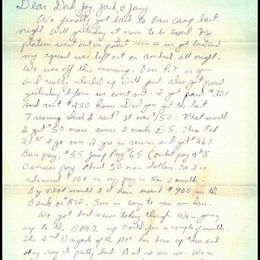








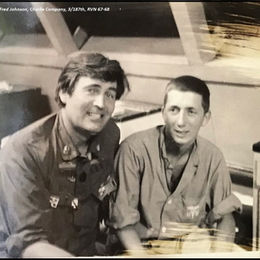

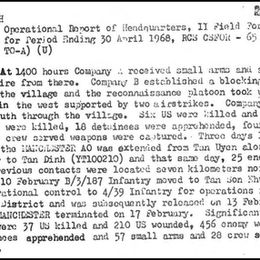












![John, Flight Line[13010].jpg](https://static.wixstatic.com/media/403bd3_6be468604ff54373a20aab9475043686~mv2.jpg/v1/fill/w_260,h_260,fp_0.45_0.09,q_90,enc_avif,quality_auto/403bd3_6be468604ff54373a20aab9475043686~mv2.jpg)

